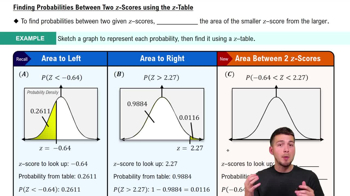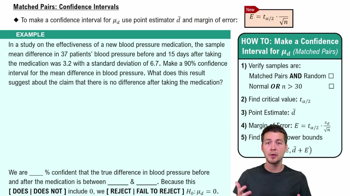Here are the essential concepts you must grasp in order to answer the question correctly.
Two-Way ANOVA
Two-way ANOVA (Analysis of Variance) is a statistical method used to determine the effect of two independent categorical variables on a continuous dependent variable. It helps in understanding how different groups interact and whether the means of the groups are significantly different from each other. This technique is particularly useful when analyzing complex datasets with multiple factors.
Recommended video:
Probabilities Between Two Values
Outliers
Outliers are data points that differ significantly from other observations in a dataset. They can skew results and affect statistical analyses, such as ANOVA, by influencing the mean and variance. Identifying and understanding the impact of outliers is crucial, as they can lead to misleading conclusions if not properly addressed.
Recommended video:
Comparing Mean vs. Median
Effect on ANOVA Results
The presence of an outlier can significantly affect the results of an ANOVA test by increasing the variability within groups, which may lead to a Type I error (false positive) or Type II error (false negative). This alteration can change the F-statistic and p-values, potentially leading to incorrect interpretations of the data. Understanding how outliers influence ANOVA is essential for accurate data analysis.
Recommended video:
Matched Pairs: Confidence Intervals






